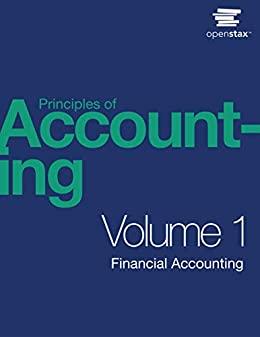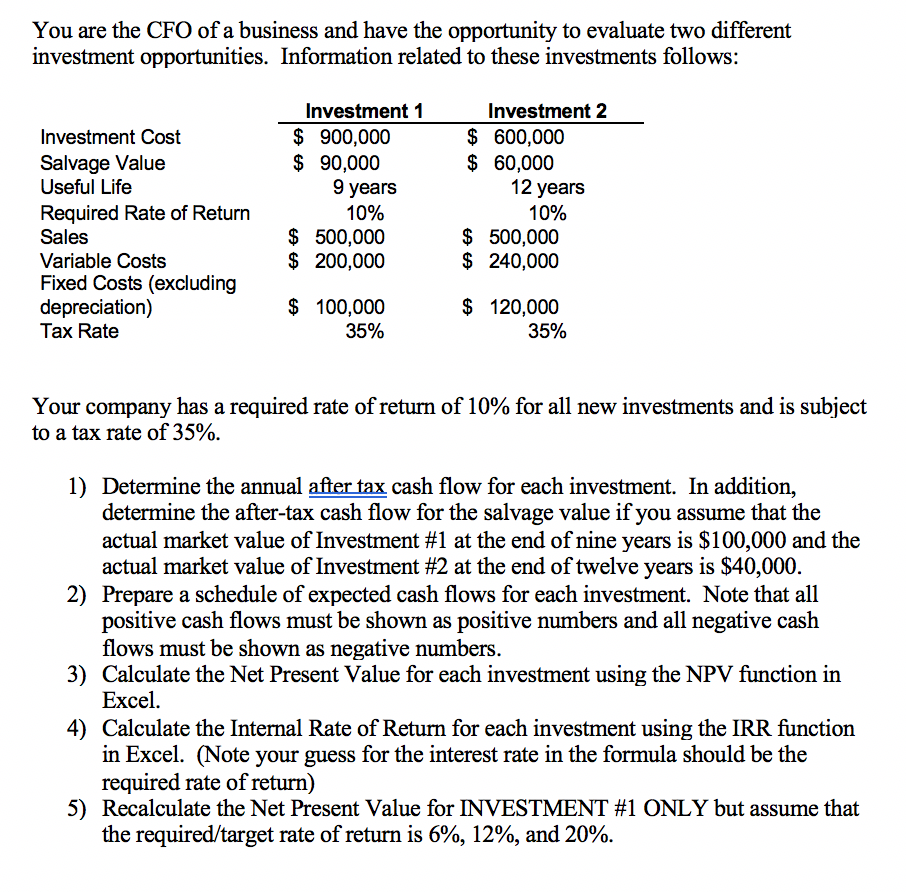
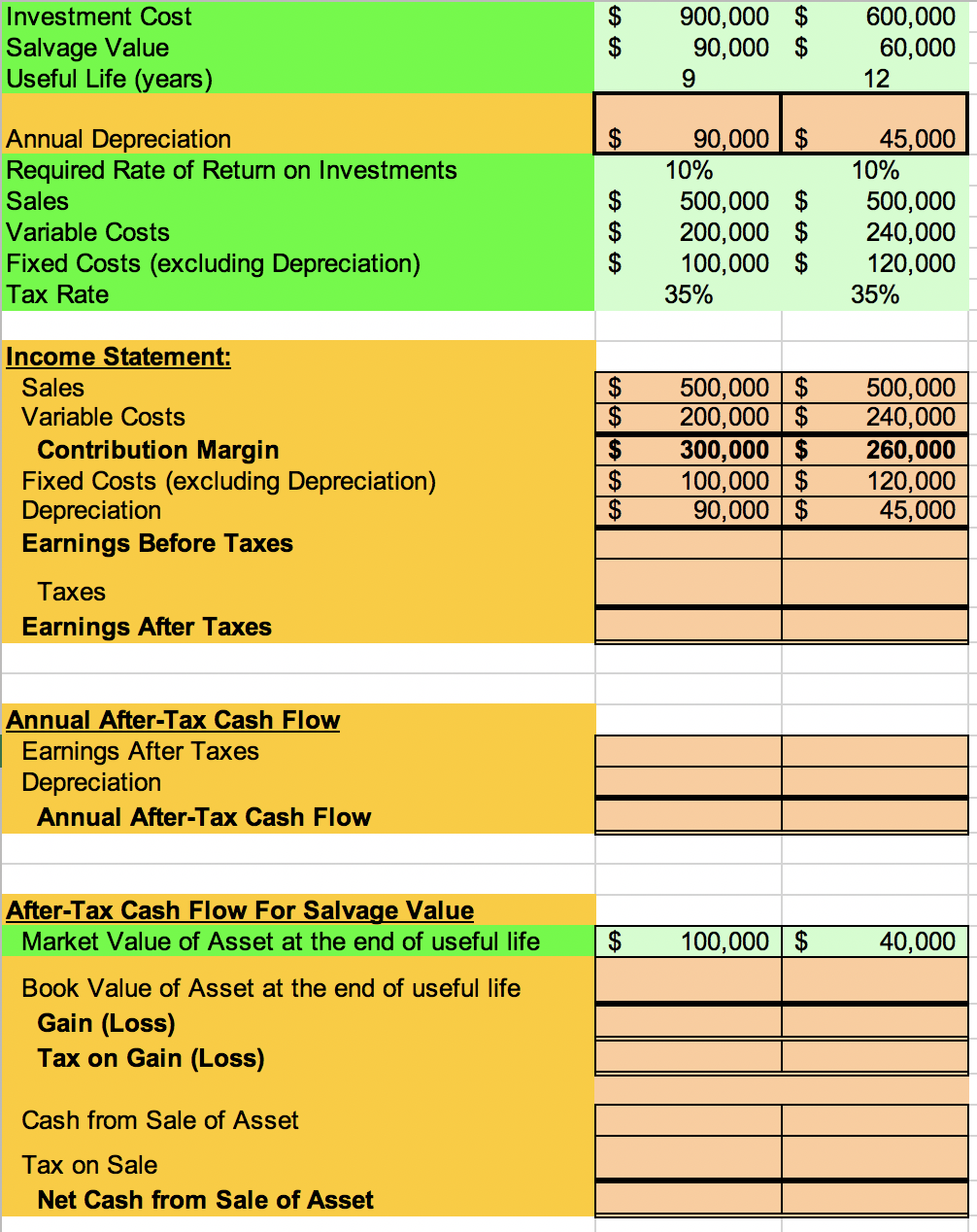
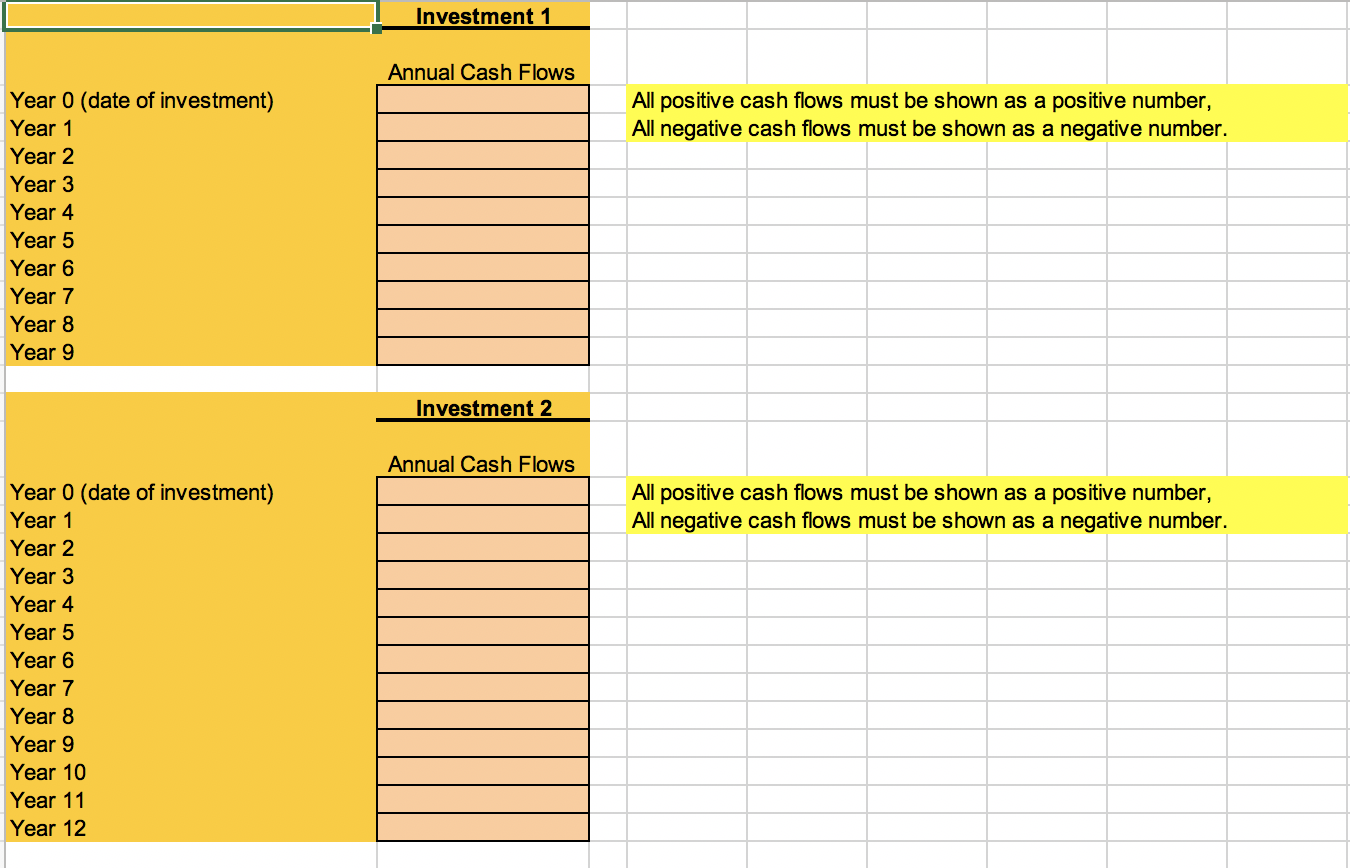

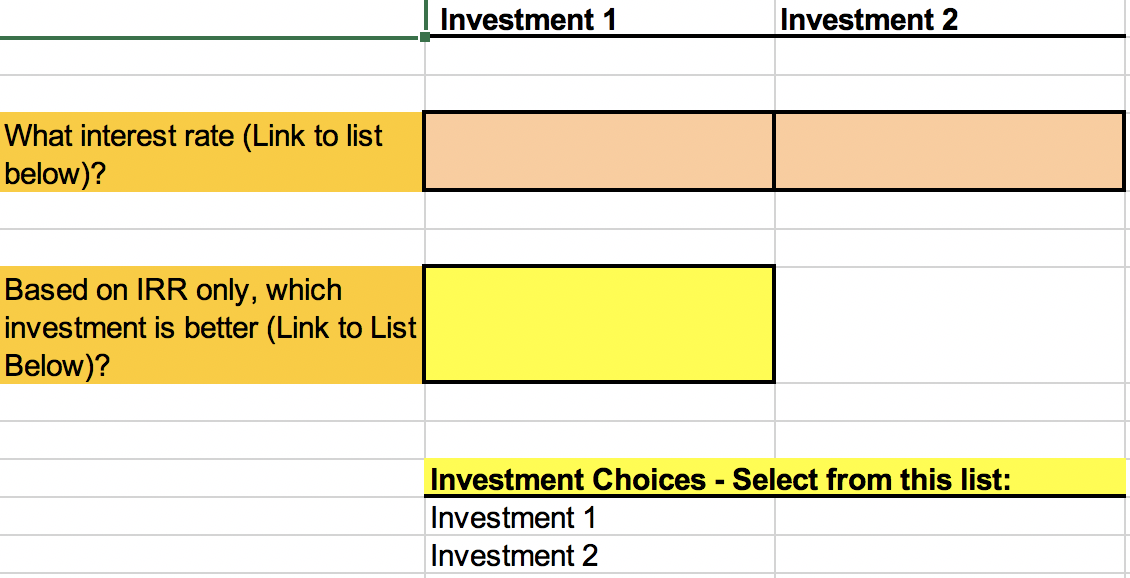

You are the CFO of a business and have the opportunity to evaluate two different investment opportunities. Information related to these investments follows: Investment Cost Salvage Value Useful Life Required Rate of Return Sales Variable Costs Fixed Costs (excluding depreciation) Tax Rate Investment 1 $ 900,000 $ 90,000 9 years 10% $ 500,000 $ 200,000 $ 100,000 35% Investment 2 $ 600,000 $ 60,000 12 years 10% $ 500,000 $ 240,000 $ 120,000 35% Your company has a required rate of return of 10% for all new investments and is subject to a tax rate of 35%. 1) Determine the annual after tax cash flow for each investment. In addition, determine the after-tax cash flow for the salvage value if you assume that the actual market value of Investment #1 at the end of nine years is $100,000 and the actual market value of Investment #2 at the end of twelve years is $40,000. 2) Prepare a schedule of expected cash flows for each investment. Note that all positive cash flows must be shown as positive numbers and all negative cash flows must be shown as negative numbers. 3) Calculate the Net Present Value for each investment using the NPV function in Excel. 4) Calculate the Internal Rate of Return for each investment using the IRR function in Excel. (Note your guess for the interest rate in the formula should be the required rate of return) 5) Recalculate the Net Present Value for INVESTMENT #1 ONLY but assume that the required/target rate of return is 6%, 12%, and 20%. Investment Cost Salvage Value Useful Life (years) 900,000 $ 90,000 $ 9 600,000 60,000 12 Annual Depreciation Required Rate of Return on Investments Sales Variable Costs Fixed Costs (excluding Depreciation) Tax Rate $ $ $ 90,000 $ 10% 500,000 $ 200,000 $ 100,000 $ 35% 45,000 10% 500,000 240,000 120,000 35% Income Statement: Sales Variable Costs Contribution Margin Fixed Costs (excluding Depreciation) Depreciation Earnings Before Taxes $ 500,000 $ 200,000 $ 300,000 $ 100,000 $ 90,000 $ 500,000 240,000 260,000 120,000 45,000 Taxes Earnings After Taxes Annual After-Tax Cash Flow Earnings After Taxes Depreciation Annual After-Tax Cash Flow After-Tax Cash Flow For Salvage Value Market Value of Asset at the end of useful life $ 100,000 $ 40,000 Book Value of Asset at the end of useful life Gain (Loss) Tax on Gain (Loss) Cash from Sale of Asset Tax on Sale Net Cash from Sale of Asset Investment 1 Annual Cash Flows All positive cash flows must be shown as a positive number, All negative cash flows must be shown as a negative number. Year 0 (date of investment) Year 1 Year 2 Year 3 Year 4 Year 5 Year 6 Year 7 Year 8 Year 9 Investment 2 Annual Cash Flows All positive cash flows must be shown as a positive number, All negative cash flows must be shown as a negative number. Year 0 (date of investment) Year 1 Year 2 Year 3 Year 4 Year 5 Year 6 Year 7 Year 8 Year 9 Year 10 Year 11 Year 12 Investment 1 Investment 2 Net Present Value Based on NPV only, which investment is better (Link to List| Below)? Investment Choices: Select from this list: Investment 1 Investment 2 Investment 1 Investment 2 What interest rate (Link to list below)? Based on IRR only, which investment is better (Link to List Below)? Investment Choices - Select from this list: Investment 1 Investment 2 Calculate NET PRESENT VALUE FOR INVESTMENT #1 ONLY Assuming the following Required Rates of Return 6% 12% 20% Net Present Value The LOWER the required interest rate, the the Net Present Value (Link to List Below). The HIGHER the required interest rate, the the Net Present Value (Link to List Below) Fill in the Blank -- Select from this list: higher lower












